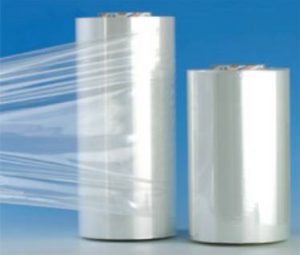
All these steps add up to about two minutes of wasted labor, or about $50, 000 if you use money. Within five years, the company packs 50 days and pays the operator $12.00 an hour.
Fortunately, the need to perform these steps can be eliminated by some effective stretch wrappers. An automated person can cut and capture movies at the end of the day. The operator can use the lanyard switch or remote control device to start the newline cycle – none of which can leave the forklift.
Second, traffic accidents can be reduced.
According to the occupational safety and health administration (OSHA), about 95,000 people are injured each year and are injured when using forklift. A third of the injuries occurred when the operator got off the train and the forklift. When proper forklift closure procedures are ignored by the operator and they fail to comply with safety regulations, they may trip or fall off the forklift, and a sprain or fracture will occur.
If the driver doesn’t need to get on and off, it’s impossible to fall or stumble. The risk of damage to the fpc2 wrapper can also be eliminated.
Third, the project. You can improve your productivity. Getting the job done more efficiently at the lowest cost is what most people want.
Increasing investment automation in an extended package means getting more of the same labor input from your operators. In the long run, you really won’t pay that much.
To spread the cost into its economic life, thousands of goods need to be packed, and we can see that the cost of each package is very low. For example, if someone packs 50 loads a day, and over 10 years, the $15,000 ($13,000) machine will cost 12 cents ($0.01)/load.
But each load of labor savings is more surprising. If the automation is paid and you pay your carrier ($11) $12 an hour, pack 50 loads per day, within five years, you can achieve the goal of eliminating labor ($45,000).
Fortunately, the need to perform these steps can be eliminated by some effective stretch wrappers. An automated person can cut and capture movies at the end of the day. The operator can use the lanyard switch or remote control device to start the newline cycle – none of which can leave the forklift.
Second, traffic accidents can be reduced.
According to the occupational safety and health administration (OSHA), about 95,000 people are injured each year and are injured when using forklift. A third of the injuries occurred when the operator got off the train and the forklift. When proper forklift closure procedures are ignored by the operator and they fail to comply with safety regulations, they may trip or fall off the forklift, and a sprain or fracture will occur.
If the driver doesn’t need to get on and off, it’s impossible to fall or stumble. The risk of damage to the fpc2 wrapper can also be eliminated.
Third, the project. You can improve your productivity. Getting the job done more efficiently at the lowest cost is what most people want.
Increasing investment automation in an extended package means getting more of the same labor input from your operators. In the long run, you really won’t pay that much.
To spread the cost into its economic life, thousands of goods need to be packed, and we can see that the cost of each package is very low. For example, if someone packs 50 loads a day, and over 10 years, the $15,000 ($13,000) machine will cost 12 cents ($0.01)/load.
But each load of labor savings is more surprising. If the automation is paid and you pay your carrier ($11) $12 an hour, pack 50 loads per day, within five years, you can achieve the goal of eliminating labor ($45,000).